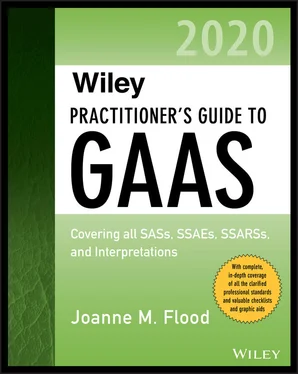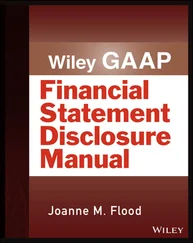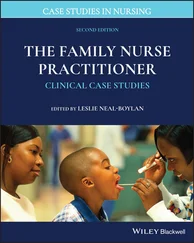Failure to perform reconciliations of significant accounts. For example, accounts receivable subsidiary ledgers are not reconciled to the general ledger account in a timely or accurate manner.
Undue bias or lack of objectivity by those responsible for accounting decisions; for example, consistent understatement of expenses or overstatement of allowances at the direction of management.
Misrepresentation by client personnel to the auditor (an indicator of fraud).
Management override of controls.
Failure of an application control caused by a deficiency in the design or operation of an IT general control.
An observed deviation rate that exceeds the number of deviations expected by the auditor in a test of the operating effectiveness of a control. For example, if the auditor designs a test in which he or she selects a sample and expects no deviations, the finding of one deviation is a nonnegligible deviation rate because, based on the results of the auditor’s test of the sample, the desired level of confidence was not obtained.
Illustration 2. Auditor’s Communication Regarding Significant Deficiencies and Material Weaknesses (Au-C 265.A38)
To Management and [ identify the body or individuals charged with governance, such as the entity’s board of directors ] of ABC Company:
In planning and performing our audit of the financial statements of ABC Company (the “Company”) as of and for the year ended December 31, 20XX, in accordance with auditing standards generally accepted in the United States of America, we considered the Company’s internal control over financial reporting (internal control) as a basis for designing audit procedures that are appropriate in the circumstances for the purpose of expressing our opinion on the financial statements, but not for the purpose of expressing an opinion on the effectiveness of the Company’s internal control. Accordingly, we do not express an opinion on the effectiveness of the Company’s internal control.
Our consideration of internal control was for the limited purpose described in the preceding paragraph and was not designed to identify all deficiencies in internal control that might be [ material weaknesses or significant deficiencies ] and therefore [ material weaknesses or significant deficiencies ] may exist that were not identified. However, as discussed below, we identified certain deficiencies in internal control that we consider to be [ material weaknesses or significant deficiencies or material weaknesses and significant deficiencies ].
A deficiency in internal control exists when the design or operation of a control does not allow management or employees, in the normal course of performing their assigned functions, to prevent, or detect and correct, misstatements on a timely basis. A material weakness is a deficiency, or a combination of deficiencies, in internal control, such that there is a reasonable possibility that a material misstatement of the entity’s financial statements will not be prevented, or detected and corrected, on a timely basis. [ We consider the following deficiencies in the Company’s internal control to be material weaknesses :]
[ Describe the material weaknesses that were identified and explain their potential effects .]
[ A significant deficiency is a deficiency, or a combination of deficiencies, in internal control that is less severe than a material weakness, yet important enough to merit attention by those charged with governance. We consider the following deficiencies in the Company’s internal control to be significant deficiencies :]
[ Describe the significant deficiencies that were identified and explain their potential effects .]
[ If the auditor is communicating significant deficiencies and did not identify any material weaknesses, the auditor may state that none of the identified significant deficiencies are considered to be material weaknesses .]
This communication is intended solely for the information and use of management, [ identify the body or individuals charged with governance ], others within the organization [ identify any governmental authorities to which the auditor is required to report ], and is not intended to be, and should not be, used by anyone other than these specified parties.
[ Auditor’s signature ]
[ Auditor’s city and state ]
[ Date ]
Illustration 3. Auditor’s Communication Indicating That No Material Weaknesses Were Identified (AU-C 265.A39)
To Management and [ identify the body or individuals charged with governance, such as the entity’s board of directors ] of NPO Organization:
In planning and performing our audit of the financial statements of NPO Organization (the “Organization”) as of and for the year ended December 31, 20XX, in accordance with auditing standards generally accepted in the United States of America, we considered the Organization’s internal control over financial reporting (internal control) as a basis for designing audit procedures that are appropriate in the circumstances for the purpose of expressing our opinion on the financial statements, but not for the purpose of expressing an opinion on the effectiveness of the Organization’s internal control. Accordingly, we do not express an opinion on the effectiveness of the Organization’s internal control.
A deficiency in internal control exists when the design or operation of a control does not allow management or employees, in the normal course of performing their assigned functions, to prevent, or detect and correct, misstatements on a timely basis. A material weakness is a deficiency, or a combination of deficiencies, in internal control, such that there is a reasonable possibility that a material misstatement of the entity’s financial statements will not be prevented, or detected and corrected, on a timely basis.
Our consideration of internal control was for the limited purpose described in the first paragraph and was not designed to identify all deficiencies in internal control that might be material weaknesses. Given these limitations, during our audit we did not identify any deficiencies in internal control that we consider to be material weaknesses. However, material weaknesses may exist that have not been identified.
[ If one or more significant deficiencies have been identified, the auditor may add the following :]
Our audit was also not designed to identify deficiencies in internal control that might be significant deficiencies. A significant deficiency is a deficiency, or a combination of deficiencies, in internal control that is less severe than a material weakness, yet important enough to merit attention by those charged with governance. We communicated the significant deficiencies identified during our audit in a separate communication dated [ date ].
This communication is intended solely for the information and use of management, [ identify the body or individuals charged with governance ], others within the organization [ identify any governmental authorities to which the auditor is required to report ], and is not intended to be, and should not be, used by anyone other than these specified parties.
[ Auditor’s signature ]
[ Auditor’s city and state ]
[ Date ]
9 AU-C 300 Planning an Audit
Scope
Objective of AU-C Section 300
Requirements
Preliminary Engagement Activities
Documentation
Matters to Consider in Developing an Audit Strategy
AU-C 300 provides guidance on planning a recurring audit of financial statements. Initial audit engagement planning is also addressed. Guidance for planning audits of group financial statements can be found in AU-C 600. (AU-C 300.01)
Читать дальше












